In the article Introduction to Magnetic particle Testing, we learned how efficient, Reliable and quick the NDT method it is for detecting surface and subsurface discontinuities’ still it cannot replace Dye Penetrant testing, the reason being with time more and more light non-metallic materials are used in the industry ex. Aircraft Industries. These non-metallic materials cannot be inspected using Magnetic Particle testing due to its process limitations. This makes liquid Penetrant testing a crucial NDT method.
To know more about the history of Liquid Penetrant testing read our article History of NDT.
Introduction:
Liquid penetrant testing is a versatile nondestructive test method used for the detection of OPEN TO SURFACE DISCONTINUITIES in a wide variety of solid, non-porous materials. This method is also known as dye penetration testing. It is economical, versatile, and requires minimal training when compared to other NDE methods. It basically involves the application of Penetrant on the testing surface, allowing it on the test surface for a period of time and application of the developer after cleaning the Penetrant completely from the test surface. The test results indicating the presence of Discontinuities not visible by unaided human eyes.
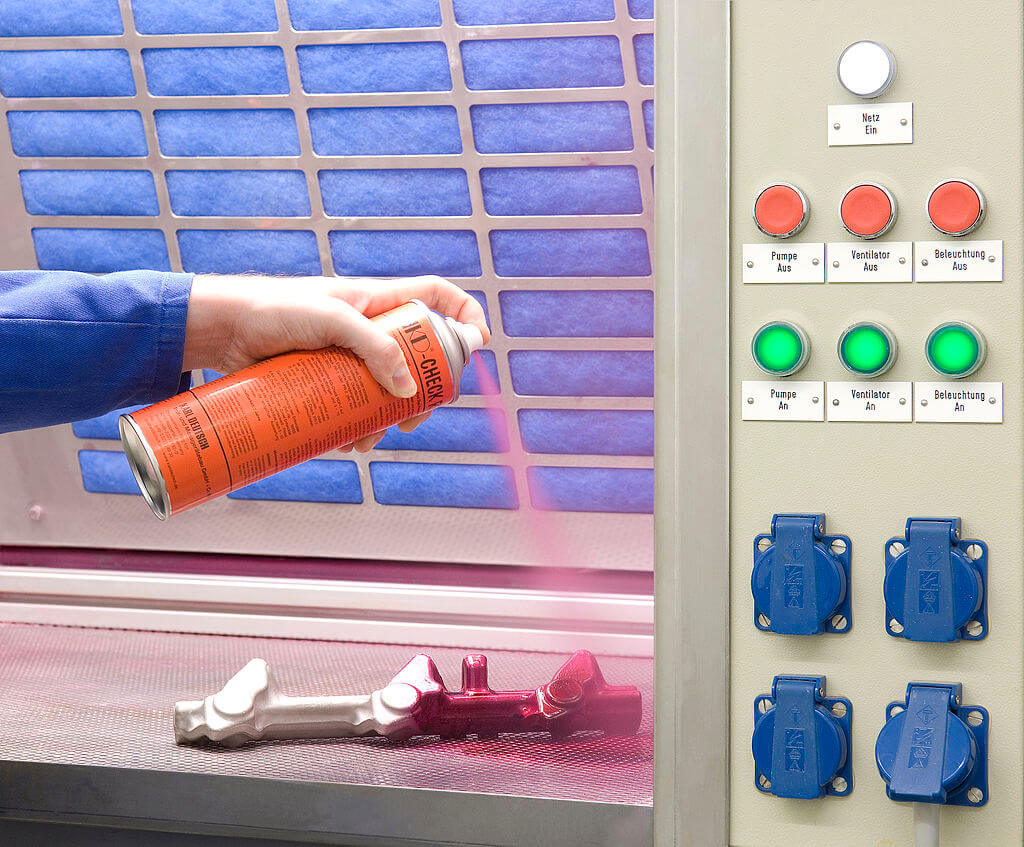
Basic Principle:
The principle phenomenon in liquid penetrant testing is Capillary action.
Capillary action is the ability of a liquid to flow in narrow spaces without the assistance of, or even in opposition to, external forces like gravity.
A Penetrant made of dye and liquid when applied on a clean, dry surface. It will wet the surface properly and travels by capillary action and enters the discontinuities open to the surface and flow up and down into the opening. After cleaning off excess Penetrant from the surface, only the Penetrant in the discontinuities remains.
Reverse capillary action causes the penetrant to bleed back out from discontinuities’ forming a penetrant indication. In order to aid the reverse capillary action, a contrasting developer is used which makes indications easier to see.
Procedure:
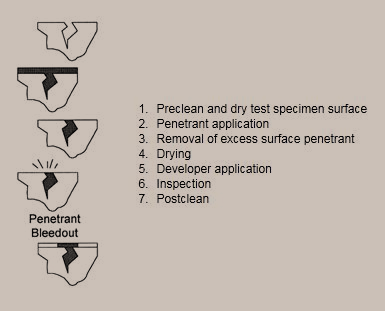
Step 1: Precleaning
Required to make the test surface suitable for liquid penetrant testing.
The testing surface must be free from foreign materials like dust, dirt, rust or paints that will block the open discontinuities
Methods: Using solvents, detergents, vapor degreasing, ultrasounds, chemical and paint strippers.
Cleaning operations like power wire brushing, grit blasting, shot peening and other metal smearing operations must be avoided.
Note: test objects should be allowed to dry completely after the Precleaning before application of Penetrant.
Step 2: Application of Penetrant
Once the test surface is dry after the Precleaning penetrant can be applied either by spraying, brushing, pouring or dipping depending on the type of penetrant and job geometry.
Once the penetrant has wetted the test surface it should be kept as it is for a period of time called dwell time so that the penetrant enters and fill any discontinuity open to the surface.
Note: Penetrant should not remain on the test surface for a long period of time such that it dries on the test surface. Normally dwell time is 5 min. for castings and welding and 10 min. for forged or rolled test items in a temperature range of 10 to 52 degrees Celsius.
Illumination
- The illumination for the visible test method is 100-foot candles(fc).
for Fluorescent penetrants,
- the examination area should be illuminated the UV-A lights which operate in the range between 320 nm and 400nm.
- The UV-A light should achieve a minimum of 1000microwatt/cm sq. on the test surface.
- the ambient light should not be more than 2 fc.
Step 3: Application of Developer :
Once dwell time is completed the excess penetrant should be removed and the developer should be applied on the test surface.
the Developer can be applied by
- air suspension
- electrostatic spraying
- immersion of test object
- powder application.
Step 4: Evaluation and Interpretation
The test object must be monitored closely during developer dwell time(Typically 10 min.) to properly evaluate the indications.
Evaluation and interpretations are carried out by certified personnel as per the reference procedure.
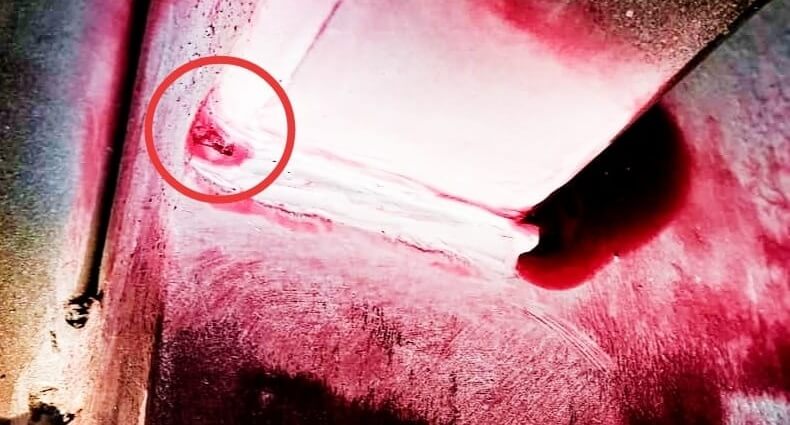
To know about how to get certified read our blog: Beginners guide to become an NDT technician.
Step 5: Post Cleaning
Once the test indications are interpreted and evaluated it is necessary to post clean the test object immediately because penetrants contain chemicals that can harm test object surface if stays on test surface for a long period of time. Precleaning methods can also be used for post-cleaning.
Types and methods of liquid penetrant testing.
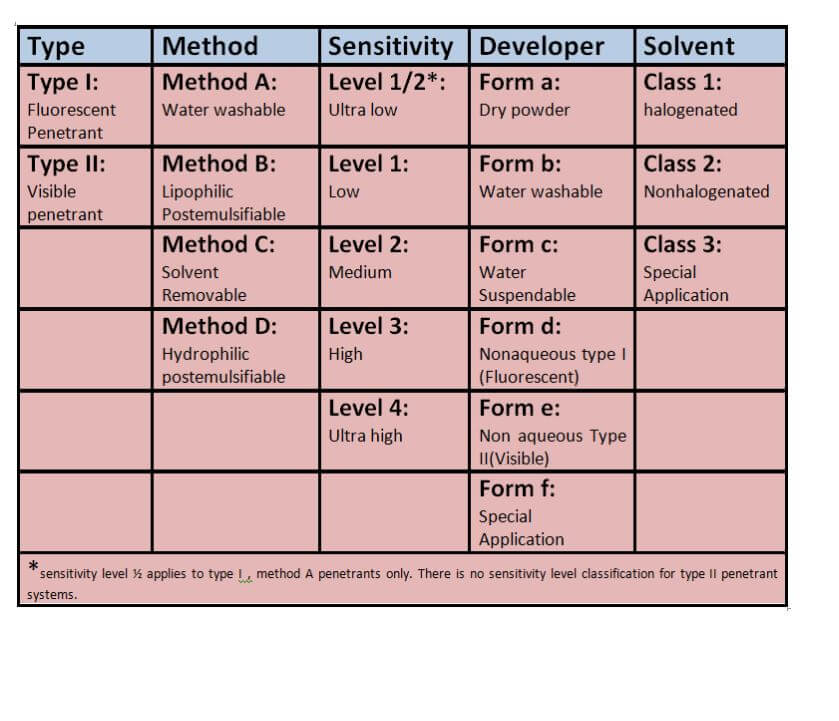
Applications :
- Inspection of non-porous materials.
- to detect open to the surface discontinuities of welds between different Pass
- can be used to inspect of non-magnetic Components.
- Final inspection of components.
- In-service inspection of machine components.
Advantages:
- Can be used for a wide variety of components
- Relatively inexpensive.
- Detects very small surface discontinuities.
- It can be carried out even in overhead conditions.
Limitations:
- Penetrants contain chemicals hence post-cleaning also necessary
- Extensive, time-taking pre-cleaning critical—surface contaminants can mask defects
- Sensitive to open to surface defects only
- Direct connection to the surface under test necessary
- Works on relatively non-porous surface materials only
- only the location of discontinuities can be found no depth sizing of indications can be carried out.
- Multi-process testing procedure hence it is user-dependent and time taking.
- No permanent recordable data obtained for future reference.
- Environmental concerns—may require disposing of chemicals and expensive handling
References :
https://en.wikipedia.org/wiki/Capillary_action
liquid penetrant testing classroom training book (PTP)
ASME BPVC Sec-V 2019
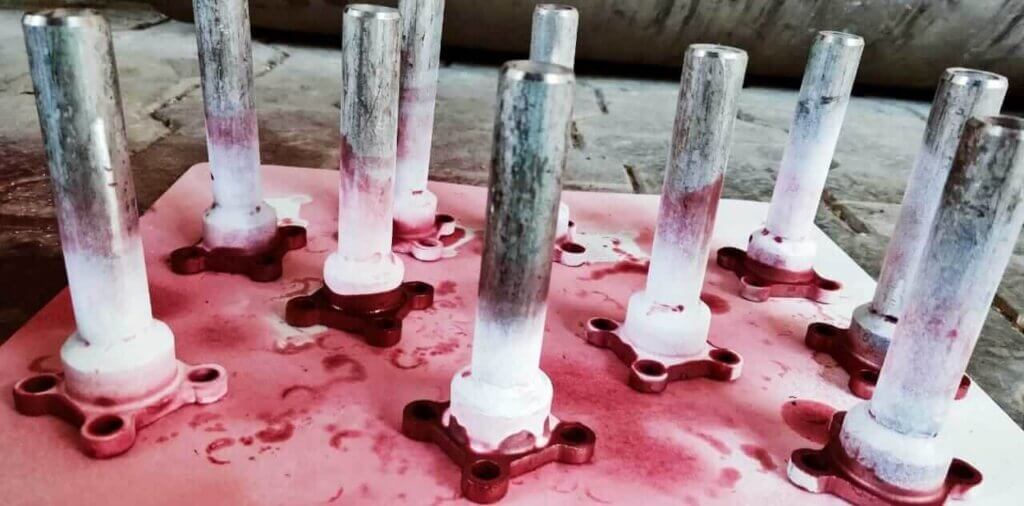
Pingback: Introduction to Eddy-current Testing(ECT) | World Of NDT
This is a very helpful blog post! I’m learning about ndt in one of my engineering classes and just read this article on liquid penetrant testing as well as yours and it really helped me understand this topic much better!
really happy to know that our blogs are able to serve it’s purpose nicely.
Pingback: Liquid Penetrant Testing ASME BPVC SEC-V, Article -6 | World Of NDT
Thanks a lot for the post.Really thank you! Want more.
Appreciate you sharing, great article.Really looking forward to read more. Want more.
Great, thanks for sharing this article post.Thanks Again. Keep writing.
Appreciate you sharing, great post.Much thanks again. Fantastic.
A round of applause for your blog article. Awesome.
Very informative blog.Much thanks again. Want more.
Thanks for the post.Thanks Again. Want more.
Looking forward to reading more. Great article post.Really looking forward to read more. Want more.
Major thanks for the blog.Really looking forward to read more. Great.